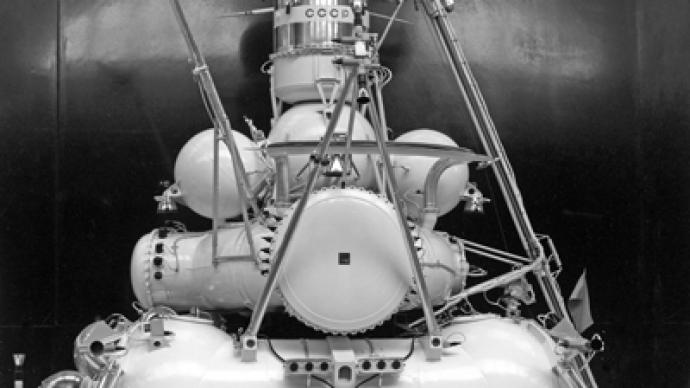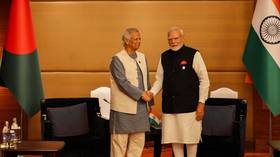Soviet discovery of lunar water ignored by West

Clear evidence of water on the moon would have created tremendous opportunities for mankind. And yet, the results of the last Soviet lunar mission, which returned in 1976 with water-rich rocks from beneath the moon’s surface, remained unnoticed.
Talks of lunar bases are becoming increasingly common in some leading space powers, such as Russia or China. With these plans in mind, solid evidence of water presence on the moon would be more than topical. And it seems that the evidence has begun to mount in recent years, says a report on TechnologyReview.com.It began, perhaps, with NASA’s Clementine mission in 1994, which searched for water by bouncing radio waves off the lunar surface – the returning waves indicated that there was enough water in the moon’s polar craters. However, some doubted the interpretation of the results.Lunar Prospector – another NASA’s mission – kicked off in 1998 and was in part aimed at finding possible polar ice deposits by measuring the amount of neutrons emitted from the surface. Some evidence later came from Galileo's fly-by of the moon on its way to Jupiter. In 2009, the Indian spacecraft Chandrayaan-I used an infrared camera to search for water in lunar rocks.These missions have clearly demonstrated that the moon is not as dry as once thought. All samples delivered by Apollo expeditions did have traces of water, but those were believed to be the result of contamination.But what remained unnoticed in the West is the Soviet discovery of water in moon rocks as early as the 1970s.The Soviet Luna-24 sample-return mission landed on the surface of Earth’s moon in August 1976. The spacecraft extracted 300 grams of rock from the depth of two meters and delivered it to Earth. Soviet scientists then analyzed the sample and reported that water made up 0.1 per cent of its mass. They published their results in 1978 in the Soviet scientific journal Geokhimiya, which also has an English version, but it not widely read in the West.“No other author has ever cited the Luna 24 work,” says Arlin Crotts of the Columbia University in New York City. The settled value for the lunar bulk water content, as of 2006, was below one part per billion. The present view, Crotts went on to explain, is that the proportion well exceeds one part per million.If Western science, built on the dominance of the English language, had been less dismissive of other scientific schools, this and many other discoveries might have found their way into practical use a little sooner.















